Winter is bleak, dark, and dank. It is cold, grey, and dreary. In December and January, known in Arabic as al-kawaneen, it rains, and the wind is never weary; “Darker than Kanun” is proverbial. Daylight hours are short and chilly. Cloudy, overcast sky drowns the landscape in lead-blue shades that are dark and moody but warm and rich. Al-kawaneen, plural of kanun, is the period of freezing darkness. This is the time of year when the kanun, the fire brazier, moves into the hearth, and the earth’s northern axis is tilted farthest from the sun.
“There isn’t much work in winter,” Mohammad from Kharbata Misbah stated flatly, against all evidence to the contrary. I had already learned from other interviews with acquaintances from various Palestinian villages that most of the spring and summer legumes and fruits must be planted “bil kawanin.” In fact, December, January, and February are the most labor-intensive months for the Palestinian peasant. In Kanun lies the promise, the proverb says, of either a thriving spring or drought, بالاربعينية يا بتربع يا بتقبع.
Palestinians divide winter (al-shita’), literally the rainy season, into two periods: al-marba’aniyeh, the first 40 bitter-cold days, from December 21 until January 31. The second phase, al-khamsiniya, refers to the 50 cold days stretching from February 1 to March 21, known as Shbat and Athar. The Arabic names of the Julian months are of Aramaic, Assyrian, and Babylonian origin. Though they provide the basis for the Greek Orthodox liturgical calendar, they continue to punctuate the agricultural year in greater Syria and Mesopotamia.
“On the contrary, winter is the most strenuous work period for the peasant!” Haifa from Abu Qash countered Mohammad’s statement that there is no work in winter. “All vegetables, legumes, olives, and fruit trees are planted in al-kawaneen.” Some Palestinian proverbs discourage peasants from either travelling to visit relatives during this period or holding weddings that would squander the time necessary for work in the fields. Other sayings enjoin the peasant to work in winter and warn that should they not plant in winter they would be begging for food in the summer
اللي ما بزرع في الشتوية بشحد في الصيفية. In addition to all the agricultural work, livestock and chickens must be tended. The fruit trees and vines are pruned in this period. The rainwater conduits to the olive, apricot, and fruit trees, including the troughs around the trees, must be constantly maintained. Abu Ahmad, from Bet Suriq, supported his argument with the adage, “سيل الزيت من سيل كانون” (the oil of the olive is contingent upon its being watered during Kanun.
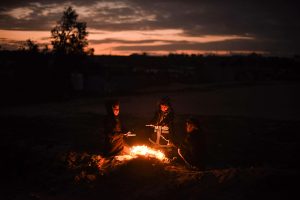
“Slippery sludge seeps between the stones of the mountain terraces that invariably tumble down and must be rebuilt to protect from soil erosion,” Khalil from Dura added.
The myth that there is no work for the peasant in winter outraged my friend Khalil. Further international phone calls from Kyoto, thanks to the internet, confirmed that winter represents the most exacting months of the year. Most legumes and vegetables, namely, spinach, leeks, okra, zucchini, fakous, lupines, cabbage, cauliflower, peas, beans, broad beans (fuI akhdar), tomatoes, etc. are planted in al-kawaneen.
Bedouins, who lead a more leisurely life than peasants, have an equally challenging time. My Bedouin Ta’mari friend Aziz, from Al-Ma’sara, explained the hardships of winter.
“First of all, we would have to dismantle our tents from the valleys and low places and move to higher locations close to cliffs with caves as protective measures from flashfloods. There we would set them up, each family tent next to its cave.” In response to my silence, he explained, “For Bedouins live in caves in winter.” He continued, “however, the majority prefer to stay in their goat-hair tent and reserve the caves for the livestock, mostly goats, where it is warm. Kanun is also the period for sowing wheat and barley seeds.”
“When do you begin to prepare the earth?” I inquired.
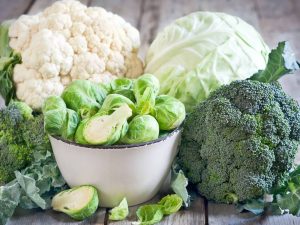
“We don’t. My father and the entire family used go to the wheat field, marsat (the plural of maris), which is the field for planting cereals. Each member of the family would follow the furrow of land ploughed the year before. After the seeds are sown, we would shovel the soil to cover them. This is for bread and for fodder the next year.”
“We would stay in the tent should it be rainy and wet, otherwise we would take the goats out to graze…but never too far.”
“Coffee drinking, the fire, the coffee pot, and huddling under the wool abaya (an overcoat of camel or goat hair) are the main male activities. So imagine these gatherings on rainy days when they could not wander far away from the camp! They would sit around chatting, telling stories, and bragging of their deeds. Women and children bore the brunt of the work. They fetched the wood for the brazier, al-kanun, from the desert, tended the sheep, milked the goats, made the cheese, and sold the dairy products in the city.”
“In the villages, the land could not be abandoned.” Haifa described the hardships of winter work. “As the days grew shorter and as the cold grew bitter, they would return home early in the afternoon. Hungry, beat, battered, and cold from the labor expended in the land in inclement weather. They could barely make the effort to eat, warm themselves around the brazier or wijaq (fireplace with chimney), before retiring to their respective mattresses.”
“Grown-up married sons and their offspring shared the common room with the parents,” Ala’ from Kufr al-Deek told me. “Each individual family – father, wife, and children – were singled out to share one common comforter among them!”
Haifa described the daily fire-kindling ritual to heat the humid, dank, freezing sleeping room. “The kanun would be prepared in the afternoon. The wood would be set on fire outdoors on the kanun. Only once the wood became glowing embers and the smoke diminished would they carry it indoors.”
“In those days, they slept inside the room together with all their animals,” Abu Ahmad added.
“It was a two-level room; the ox, mules, donkeys, sheep, and chickens were kept downstairs, and the family members would huddle around the kanun in their living-cum-sleeping quarters upstairs,” Haifa detailed. “Should their residence be a flat cave, they would sleep in the elevated mastaba and leave the sheep below….to protect the animals from the cold.”
The life of the peasant was very hard with constant work. Fields and crops could not be left untended. Vegetables and legumes had to be not only planted but constantly visited and weeded. Then they had to contend with the fear of the frost and snow in February and March, once the new saplings started to sprout, which would lay all their labor to waste.
Surviving winter was itself a major challenge, with no fresh products from the field except the dry cereals in the pantry, lentils, toasted wheat (freekeh), cracked wheat (burghul), and flour with which porridge known as fatt, the daily staple, was made. To that soup would be added leeks, spinach, stored pumpkin, or any vegetable that might be found and a great quantity of bread that thickened it enough to be eaten with the hand from one big common plate, al-batya.”
“When snow fell or when it became extremely cold, they would say, today is a day of maftul, اليوم مفتول. A rooster would be slaughtered and cooked with chickpeas in homemade tomato concentrate from the pantry. The stew would be served with maftul, homemade pasta the size of rice kernels, on the side.”
Winter nights with howling wind outside trigger imagery of warmth, intimate and joyous family life indoors. Everyone huddles bikan’kinu’ sitting still around the kanun, the only source of heat, with its glowing embers and the kettle of simmering water or chamomile infusion sweetened with dried figs or lentil soup spiced with cumin slowly brewing. Wafts of aromatic toasted orange rind, chestnuts, and bread fuse with that of burning firewood, charcoal, and jift (the dried cakes made of leftover pressed olives) to impart winter with its character. The howling wind, the thrashing rain, and the thunder and lightning outdoors contrast with the sounds of merriment indoors. Images of women of yore bent on knitting wool sweaters and darning socks, dresses, and trousers come to mind. They would exchange jokes, recount boastful tales of personal bravura, and discuss the necessary work in the fields and various chores of the coming days. A fairy tale would signal the time to sleep and alleviate the long winter nights and help them unwind from the intensive labor of al-kawaneen.
Kawaneen is derived from the three-letter Semitic root KNN. In Assyrian, Aramean, Nabatean, and Arabic, the word knn means to hide, to take refuge, and to protect. As such, the daughter-in-law, adopted and protected by her new family, is referred to as kinna. In Hebrew, kin, as in other Semitic languages, refers to the coop where chickens are kept warm, sheltered from the cold, and protected from coyotes and foxes. The familiar idiom kin ya walad is often used to admonish a young, restless, hyperactive child who should sit still. On a more introspective level, the word al-maknun has a symbolic meaning and refers to what stirs within but remains hidden from view.
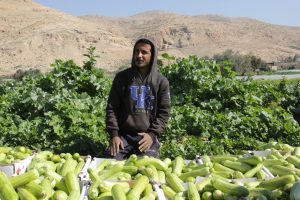
In fact, in Kanun all seeds except wheat, barley, and lentils remain dormant under the ground. Life does not return to the listless grey trees until late February, hence the necessity to plant them during the period of dormancy.
The winter solstice heralds the realignment of the earth’s axis and its movement around the sun. Ancient civilizations proffered the celestial event as a mystery. Among the Canaanites, the return of the sun was seen as the rebirth of Baal of the Sun, and the event was celebrated. The opening Christmas liturgical verses, according to his eminence the erudite Greek Orthodox Patriarch Theophilus, are derived from these celebrations. In Kanun, al-maknun, the great mystery of life and death found expression.
The period following al-marba’aniyya is known as al-khamsinyya. The warming trend begins with the month of Shbat. This is attested by the saying, bishabbet u billabet wi rihat el sef feeh, which translates as “It thrashes rain and churns mud, but it carries the promise of the summer warmth.” The month Athar, March, is still cold and treacherous, Khabby fahmatak al-kbar la ‘ammak Athar, “Save the big pieces of charcoal for the month of March.”
The anxiety of Palestinian peasants concerning the success and survival of their crops is expressed in Canaanite Ugaritic mythology. Baal, the god of rain and fertility, had to fight against the two major enemies that could lay to waste the fields. Whereas the God Mot represented drought, Yam, the god of the sea, represented the danger of snow, frost, and heavy rainfall and flooding that would destroy the crops. Even when al-kawaneen are over, danger remains an ever-present possibility. After the middle of February, plants begin to sprout and life seeps back into the grey branches; frost, snow, and heavy rain could destroy everything.
Towards the end of February, the season of the legumes ushers in lettuce, spinach, leeks, carrots, peas, cabbage, cauliflower, and chamomile, to name a few crops, and wild plants such as hindibah, akkube, etc. flood the market. Spring is on its way back. By early March, green sour almonds appear in the market, an omen of the return of spring. The peasant now harvests the crops for cash; the labor of al-kawaneen has been rewarded.
The common myth that winter reprieves and relieves the peasant from the arduous labor in the fields persists, notwithstanding all evidence to the contrary. It underlies the urban romantic idealization of winter in the countryside and has no bearing on reality.
“Rather exhausted and fatigued by the arduous work under challenging weather conditions, they return home seeking refuge from the inclement weather and sleep very early,” Haifa commented.
Layali al-samar, whiling away the night singing and telling folktales takes place exclusively in the summer in the field house during the period of transhumance. It takes place during the season when the legumes and fruits that were planted in winter are harvested to be sold in the city. This is the period when the peasants tend their ploughs, picks, and shovels, but this is also the period when they are happiest to see their labor rewarded; their field produce as commodities acquire cash value in the market.
“In the classification of work شغل,” my introspective analytical friend Haifa explained, “many individuals do not see the process as a whole; rather, they tend to partition. They separate the concept of labor and effort expended from work that has market value from the preparatory stage. In this semantic context, work denotes an economic transaction whereby the produce becomes cash, income generating.” Haifa summarized the underlying logic of Mohammad’s surprising statement.
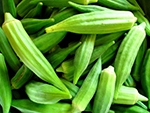
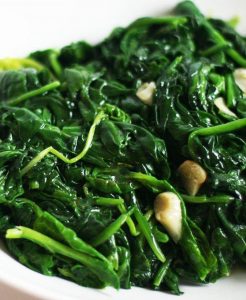
In winter there is no work in the sense that there are no economic transactions and there is no cash flow. There is nothing to sell and nothing to buy. Raising one’s expectations for a good season with profit and presumptuously including the profit in the effort expended is a risky affair that is contingent on many factors beyond individual control and as such averted. But labor they must; the effort must be expended in accordance with the Palestinian proverb, “All is with hope except for income that is earned by effort.”
(كل شي بالامل ما عدا الرزق بالعمل).
As I was proofreading this article, I received a morning greeting from Mohammad.
“Kifak?”I wrote back, “How is work?”
“It is still, الحركة واقفة , al-hamdillah,
as God wills it.” He wrote back.
For, in accordance with the Arab dictum, complaining to anyone but God is self-humiliating, الشكوى لغير الله مذلة.


